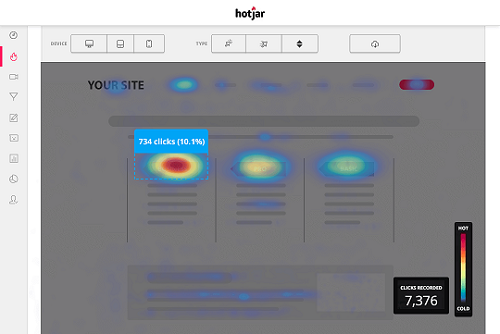Fashion & Social Media: The Rise of the ‘Dupe Influencer’
There has been a growing trend of individuals with a high social media following sharing links to and reviewing counterfeit goods – ‘dupe influencers’. The American Apparel & Footwear Association (AAFA) have created a report detailing this issue, indicating that influencers with millions of followers and millions of likes openly promote ‘dupe boxes’ via unboxing trends. Meanwhile, Gucci has been identified as the ‘most counterfeited luxury brand on TikTok’ with more than 13.6 million views of hashtags such as #guccifake and #fauxgucci tracked in a single 24-hour period.
Counterfeiting is illegal and it has a wide range of negative ramifications. Trademark counterfeiting is a process whereby a product is manufactured or distributed bearing a fake mark that is identical to or substantially indistinguishable from a registered trademark. Trademarks are how the general public differentiate a product of one brand from another brand. Also, they’re signs that the product is familiar and meets a regulated standard of quality.
It seems that even though social media platforms provide a valuable way for brand owners to connect with a broader consumer market, there are still a high number of illicit trade in counterfeit goods. In fact, the brand protection company MarkMonitor has revealed that online counterfeiting is worth around £10 billion annually in the UK.
 |
| sourcingjournal.com |
The growth of this trend comes from the increased demand for luxury fashion brands for a cheaper value. In a world where young consumers are more cost-conscious alongside being photographed at an unprecedented rate, numerous eye-catching fashion items seem to be a priority. Ultimately, accessibility is a big driving force.
However, although accessibility is important, this should not be at the expense of encouraging overconsumption. The Times noted that in the UK clothing worth £12.5 billion were binned as the rise of ‘throwaway’ fashion led to 300,000 tonnes of textiles ending up in landfills.
 |
| medium.com |
Recently, there was a settlement agreed between Amazon and two social media influencers in regards to these influencers promoting counterfeit goods. The exact terms are confidential; however, it does include a prohibition against influencers Kelly Fitzpatrick and Sabrina Kelly-Krejci from marketing, advertising, linking to, promoting or selling any products on Amazon. This settlement follows an array of counterfeit lawsuits commenced by Amazon.
Interestingly, some believe that Amazon’s actions are simply a PR gambit. More than ever before, Amazon is attempting to infiltrate the luxury fashion sphere. Therefore, it appears to be using these lawsuits to chip away at counterfeit-specific scrutiny of its platform both in the minds of consumers and of potential brand partners.
 |
| www.cnbc.com |
The Homeland Security 2020 Report in Combating Trafficking in Counterfeit and Pirated Goods has highlighted various issues linked to the manufacturing and distribution of counterfeit products.
Counterfeits are usually produced with lower standards or, even, unsafe materials which could harm consumers. The reason they are cheaper is generally because they do not need to meet health and safety standards.
Counterfeits are produced in factories which do not meet safe environmental standards, disrupting the environment as well as creating a dangerous workplace. For instance, pollution-creating and dangerous machines and materials tend to be utilised. Given that environmental damage is high up on the societal and political agenda, counterfeit goods should cause alarm bells to be ringing. Additionally, this unsafe setting is augmented by the fact that these workers are generally paid very little or, worse, forced into labour.
 |
| www.complex.com |
One other issue which is usually unknown to ‘dupe influencers’ is that counterfeit sales normally fund organised crime and terrorism.
Ultimately, the value of the legitimate brand is damaged and job losses become inevitable. In fact, the annual loss to the economy due to counterfeiting in the UK alone is £9 billion, resulting in roughly 80,500 job losses each year.
The AAFA has given 5 recommendations to combat ‘dupe influencer’ content:
- Social media platforms must clean up their sites
- Social media platforms should block certain hashtags, e.g. #designerdupes
- Social media platforms must terminate the accounts of dupe influencers who repeatedly promote counterfeits
- Dupe influencers need to improve their product disclaimers
- Consumers need more information about the reach of counterfeits
Therefore, as a long-term strategy, raising consumer awareness of the potential harms of counterfeit goods would be beneficial. In fact, some influencers have already started to share content on their platforms describing the associated dangers of counterfeit products. It is hoped that in the future, more and more social media influencers can use their powers for good and raise awareness.
 |
| www.aafaglobal.org |
Dilara Devin – Writer/Editor
A recent law graduate, with a passion for writing, reading and all things media. A lover of music and a growing interest in cooking.
LinkedIn: Dilara Devin
Fashion & Social Media: The Rise of the ‘Dupe Influencer’
 Reviewed by Dilara Devin
on
Friday, October 29, 2021
Rating:
Reviewed by Dilara Devin
on
Friday, October 29, 2021
Rating:
 Reviewed by Dilara Devin
on
Friday, October 29, 2021
Rating:
Reviewed by Dilara Devin
on
Friday, October 29, 2021
Rating:
















 Entrepreneur, international speaker on Social Media Marketing. First one in the UK to write and speak in conferences about Twitter as a marketing tool. Consultant to Corporate Companies, Government Organizations, Marketing Managers and Business Owners.
Entrepreneur, international speaker on Social Media Marketing. First one in the UK to write and speak in conferences about Twitter as a marketing tool. Consultant to Corporate Companies, Government Organizations, Marketing Managers and Business Owners. Aspiring novelist with a passion for fantasy and crime thrillers. He hopes to one day drop that 'aspiring' prefix. He started as a writer and soon after he was made Executive Editor and Manager of the team at Social Songbird. A position he held for 5 years.
Aspiring novelist with a passion for fantasy and crime thrillers. He hopes to one day drop that 'aspiring' prefix. He started as a writer and soon after he was made Executive Editor and Manager of the team at Social Songbird. A position he held for 5 years. Musician, audio technician, professional tutor and a Cambridge university English student. Interested in writing, politics and obsessed with reading.
Musician, audio technician, professional tutor and a Cambridge university English student. Interested in writing, politics and obsessed with reading. Recently graduated with a BA in English Literature from the University of Exeter, and he is about to study an MA in Journalism at the University of Sheffield. He is an aspiring journalist and novelist; in his free time he enjoys playing chess, listening to music and taking long walks through nature.
Recently graduated with a BA in English Literature from the University of Exeter, and he is about to study an MA in Journalism at the University of Sheffield. He is an aspiring journalist and novelist; in his free time he enjoys playing chess, listening to music and taking long walks through nature. Lucy is an undergraduate BSc Politics and International Relations student at the London School of Economics and Political Science.
Lucy is an undergraduate BSc Politics and International Relations student at the London School of Economics and Political Science. Anna Coopey is a 4th year UG student in Classics at the University of St Andrews in Scotland. She is a keen writer and researcher on a number of topics, varying from Modern Greek literature to revolutionary theory.
Anna Coopey is a 4th year UG student in Classics at the University of St Andrews in Scotland. She is a keen writer and researcher on a number of topics, varying from Modern Greek literature to revolutionary theory.
